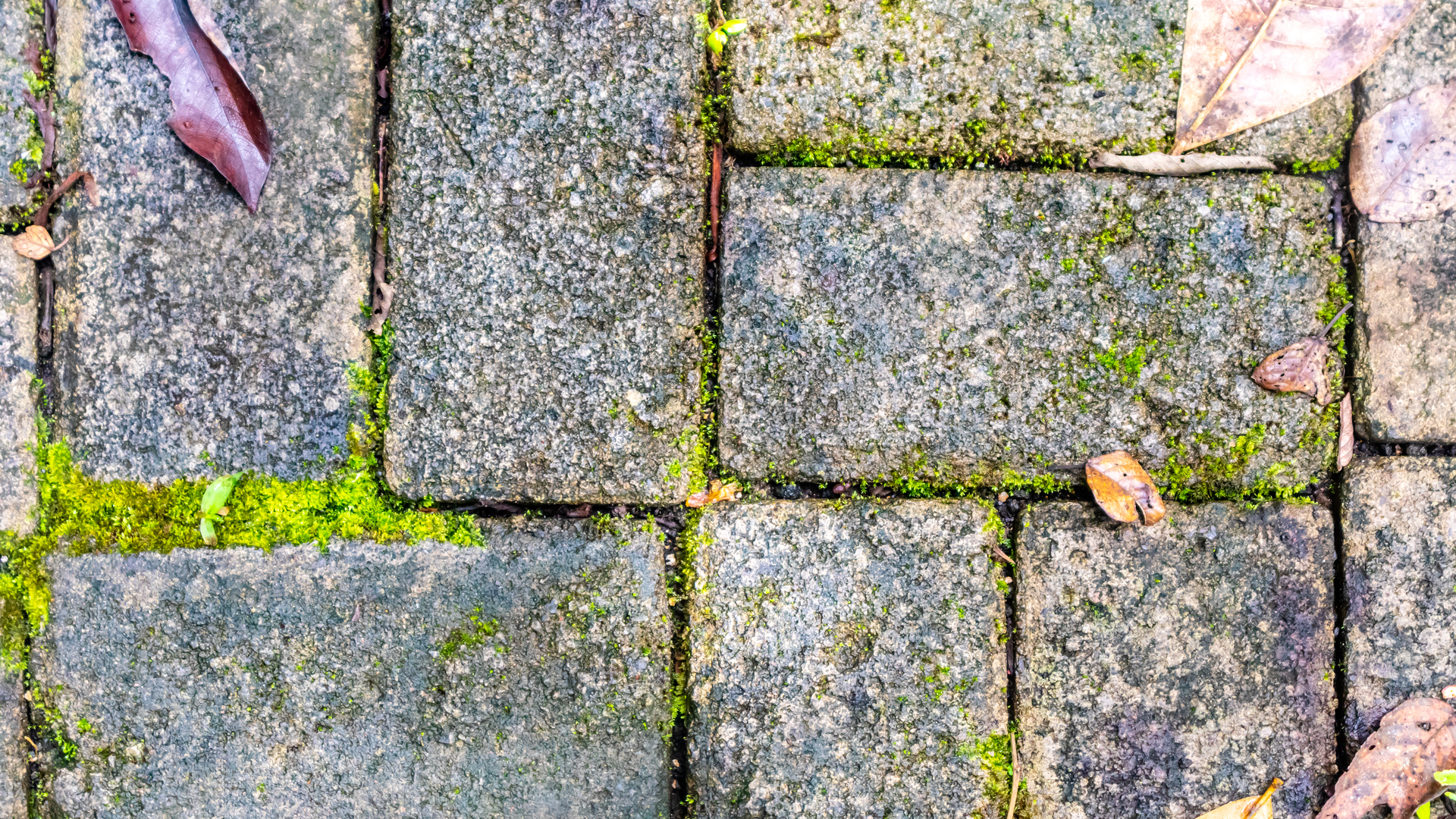How to Stop Your Patio Going Green
A green patio can spoil the look of your outdoor space and create a slippery hazard. Fortunately, with effective maintenance and the right professional support, you can prevent and reverse this issue. Whether through garden patio services, skilled patio installers, or reliable patio contractors, this guide outlines everything you need to know.

What Causes a Patio to Turn Green
The green colouring you see on your patio is usually caused by one or a combination of three culprits: algae, moss, and mould.
-
Algae appears as a thin, slimy layer. It thrives in moist, shaded areas and is very common on stone and concrete surfaces.
-
Moss is thicker and more textured, often growing between slabs or in mortar joints.
-
Mould or mildew tends to develop where there is standing moisture, poor drainage, and a lack of sunlight.
These growths are encouraged by:
-
Excess moisture from rain, garden watering, or poor drainage.
-
Limited sunlight due to overhanging trees, walls, or fences that block light.
-
Build-up of organic matter such as fallen leaves, dirt, and garden debris.
-
Porous materials such as sandstone or concrete that absorb water more readily.
Understanding the cause is essential if you want a long-term solution that keeps your patio looking fresh and inviting.
How to Clean a Green Patio Effectively
Cleaning your patio is the first step towards restoring its original appearance. Here are the best methods to get rid of green growths and stains from paving slabs.
- Step One: Clear the Area: Start by removing garden furniture, pots, toys, or any other items on the patio. Sweep away loose dirt, leaves, and twigs with a stiff broom. This helps expose all the areas affected and prevents spreading more organic material as you clean.
- Step Two: Select a Cleaning Method: There are several ways to clean your patio depending on how natural or powerful you want the process to be.
- Step Three: Scrub and Rinse: Regardless of the cleaning method you choose, scrubbing is essential. Use a stiff broom or wire brush to work the solution into the paving. Once you are satisfied with the result, rinse the area thoroughly with clean water to remove any residue.
Pressure Washing: Using a pressure washer is one of the quickest ways to blast away algae and moss. Set your washer to a medium pressure setting and hold the nozzle a short distance away from the surface. Move the nozzle slowly and evenly to avoid damaging the paving. Do not forget to wear safety goggles and gloves.
White Vinegar: White vinegar is an eco-friendly solution that is safe and effective on most surfaces. Mix equal parts white vinegar and water in a spray bottle. Spray the affected areas and leave it to soak for at least thirty minutes. Scrub with a stiff brush and rinse thoroughly. This method works well on both algae and moss.
Baking Soda: Baking soda is a gentle but effective cleaning agent. Sprinkle it generously over damp moss or algae in the evening. Leave it overnight to penetrate. The next morning, scrub the area and rinse well. It can take a few applications for stubborn patches.
Boiling Water: Pouring boiling water over green areas is a simple and chemical-free option. It kills algae and moss on contact. After pouring, let the water sit for a few minutes, then scrub the area with a brush and rinse clean.
Oxygen Bleach: Oxygen bleach is less harmful than chlorine bleach and still very effective at killing algae and moss. Mix it with water according to the instructions on the packaging, apply it to the affected area, let it sit, then scrub and rinse.
Specialist Patio Cleaners: There are various patio cleaning solutions available in garden centres or online. Products such as algae and mould removers are often designed to work without scrubbing and offer long-lasting protection. Some products will keep algae and moss away for months after a single application.
How to Prevent Your Patio Going Green Again
Once your patio is clean, taking a few preventative steps will help keep it that way. Prevention is not only easier than cleaning, but it also helps to maintain the beauty and safety of your outdoor space.
Sweep Regularly: Sweep your patio at least once a week, especially during autumn or after windy days. This removes leaves, soil, and debris that encourage green growth.
Improve Sunlight Exposure: Cut back overhanging branches or bushes that block sunlight. Sunlight helps to dry the paving quickly and makes it harder for algae and moss to survive.
Ensure Good Drainage: Poor drainage causes water to pool and encourages green growth. Make sure your patio has a slight slope to allow water to run off. You can also consider installing drainage channels or French drains if needed.
Apply a Sealant: Once your patio is completely clean and dry, applying a sealant can protect the surface. A quality sealant forms a waterproof barrier that stops moisture and dirt from penetrating the material. Choose a sealant that is suitable for your type of paving.
Treat Annually: You can use algae-inhibiting sprays once or twice a year to stop regrowth. Spring and autumn are ideal times to apply these treatments.
Why Use Professional Garden Patio Services to Prevent Greening?
Using professional garden patio services ensures the following:
-
Regular cleaning and removal of debris to disrupt algae and moss growth.
-
Thorough low‑pressure or steam cleaning without harming surfaces.
-
Application of sealants to block moisture and reduce porosity.
-
Expert advice on drainage, sunlight exposure and material choice.
Patio Cleaning and Maintenance FAQS
Professional Patio Installation and Maintenance
Contact us today and let us take care of your outdoor surfaces, so you can enjoy a beautiful, clean, and welcoming garden all year round.
We specialise in restoring the natural look of sandstone patios and paths, removing stubborn stains with care and precision. Our team can help maintain and enhance your outdoor spaces with regular care plans designed to suit your needs. We also design and install beautiful garden paths that complement your patio and landscape features.

If you’re looking for experienced landscapers and fencing contractors in Aylesbury or any of the other towns across Buckinghamshire, call B P Fencing on
07762 663 216

